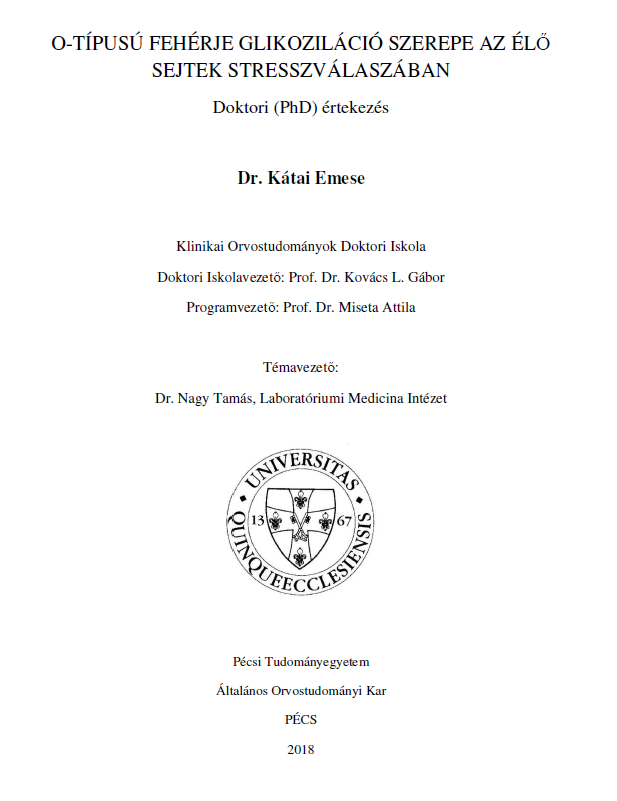O-típusú fehérje glikoziláció szerepe az élő sejtek stresszválaszában
Abstract
O-glycosylation is a dynamic, reversible protein post-translational modification which modulates the metabolic state of cells. It interacts with several other post-translational modifications including acetylation, methylation, ubiquitination and nitrosylation, and most importantly with phosphorylation. Recently, the role of O-glycosylation was revealed in stress adaptation and preconditioning.
In the first part of the work presented in my thesis we investigated the effect of acute oxidative stress on the dynamic change of O-glycosylation, its relationship with tau phosphorylation at various recovery times on the neuronal cell line SH-SY5Y. We found that intracellular O-glycosylation rapidly increased after acute stress, then returned to near the baseline at the end of the recovery period. Similar kinetic was observed at the expression level of the major enzymes involved in the regulation of O-glycosylation. In the case of tau phosphorylation, we found that tau phosphorylation at specific sites [Ps199] and [Ps396/404] changed in a reciprocal way compared to O-glycosylation. Our results show that O-glycosylation plays an important role in stress adaptation and understanding the relationship with tau phosphorylation may contribute to a more accurate understanding of the pathophysiology of Alzheimer's disease.
In the second part of the thesis, I present a study in which we investigated O-glycosylation regulation in white blood cells isolated from volunteers’ blood samples after a single bout of physical activity. Our results showed that due to physical activity, significant O-glycosylation elevation occurred in the white blood cells in comparison to the samples collected during resting. In white blood cell subpopulations, O-glycosylation change was most prominent in the group of lymphocytes and monocytes. Although understanding this complex function requires further testing, measurement of O-glycosylation in human samples could already be a useful tool for laboratory diagnostics; for example, it may be suitable for assessing the physical condition of athletes or for the screening of metabolic syndrome or diabetes.

